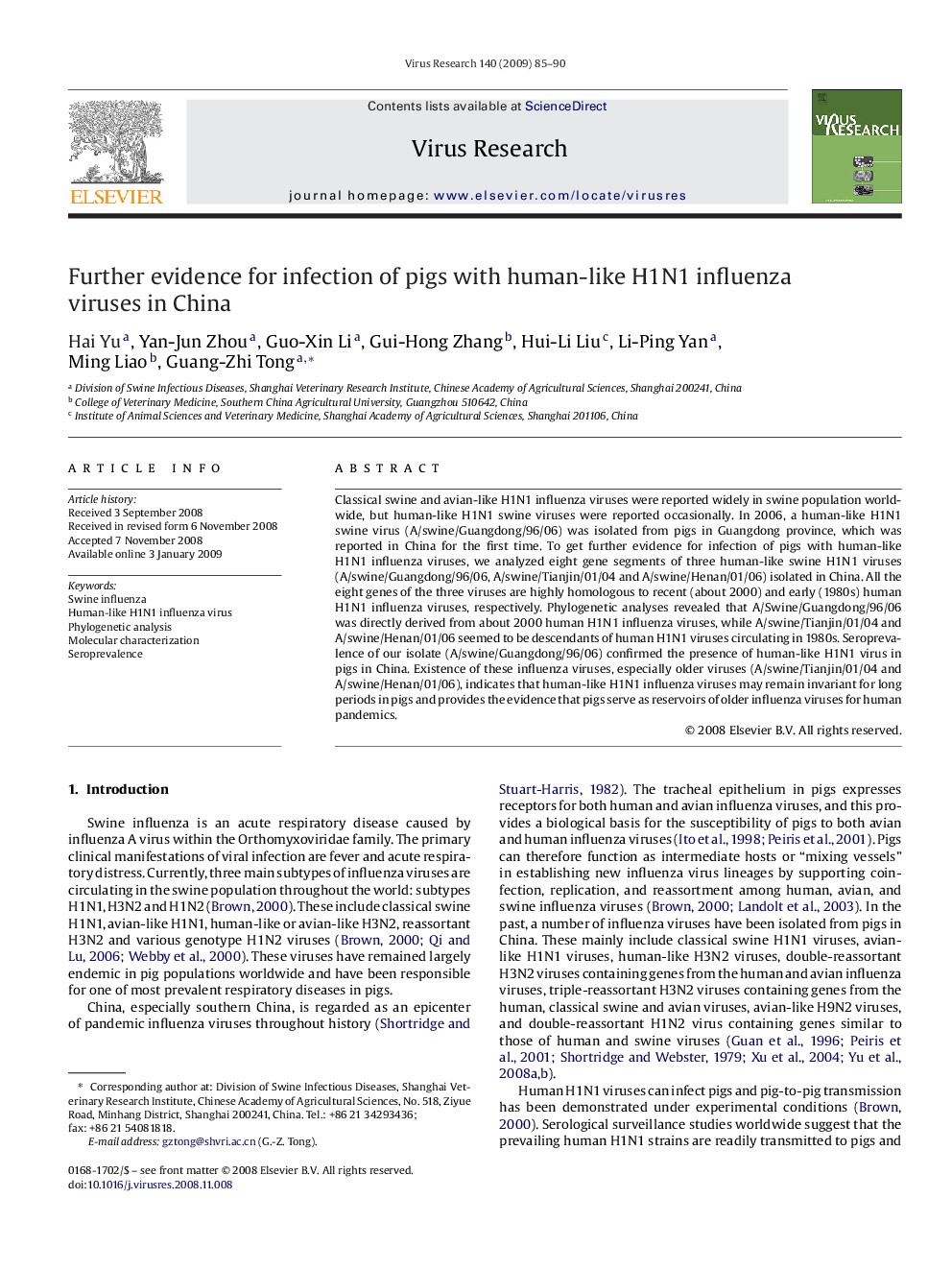| Article ID | Journal | Published Year | Pages | File Type |
|---|---|---|---|---|
| 3429929 | Virus Research | 2009 | 6 Pages |
Classical swine and avian-like H1N1 influenza viruses were reported widely in swine population worldwide, but human-like H1N1 swine viruses were reported occasionally. In 2006, a human-like H1N1 swine virus (A/swine/Guangdong/96/06) was isolated from pigs in Guangdong province, which was reported in China for the first time. To get further evidence for infection of pigs with human-like H1N1 influenza viruses, we analyzed eight gene segments of three human-like swine H1N1 viruses (A/swine/Guangdong/96/06, A/swine/Tianjin/01/04 and A/swine/Henan/01/06) isolated in China. All the eight genes of the three viruses are highly homologous to recent (about 2000) and early (1980s) human H1N1 influenza viruses, respectively. Phylogenetic analyses revealed that A/Swine/Guangdong/96/06 was directly derived from about 2000 human H1N1 influenza viruses, while A/swine/Tianjin/01/04 and A/swine/Henan/01/06 seemed to be descendants of human H1N1 viruses circulating in 1980s. Seroprevalence of our isolate (A/swine/Guangdong/96/06) confirmed the presence of human-like H1N1 virus in pigs in China. Existence of these influenza viruses, especially older viruses (A/swine/Tianjin/01/04 and A/swine/Henan/01/06), indicates that human-like H1N1 influenza viruses may remain invariant for long periods in pigs and provides the evidence that pigs serve as reservoirs of older influenza viruses for human pandemics.
